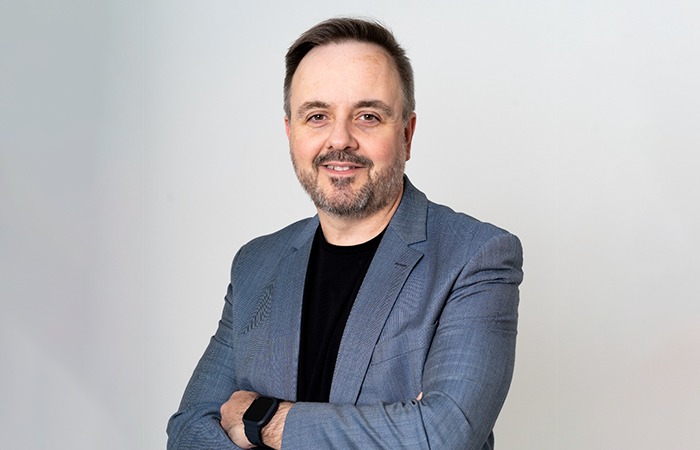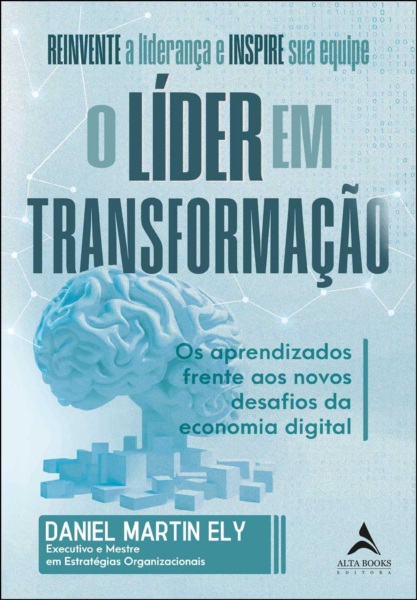
After almost three decades of working in the corporate environment, Daniel Martin Ely felt the need to rethink a series of practices in his daily life. On a professional level, the transformations in Randoncorp, of which he is executive vice president, as well as COO of Rands, and, on a personal level, his daughter Sophia's autism diagnosis led him to reinvent himself as a leader.
During the pandemic, Daniel Ely decided to turn this process into a book, which he has been sharing for some time in lectures and at his popular events. online networks. The result is The Transforming Leader: Lessons Learned from the New Challenges of the Economy Digital, edited by Alta Books and already on pre-sale, with launch scheduled for September 30th. Reputation Feed interviewed the author, and the summary of the conversation can be followed through the following three questions.
What are the characteristics of a transformational leader and what can he or she add to a company's positive and lasting public image?
The traits of transformational leadership include three pillars:
The first It is a great capacity for self-awareness, an assessment of what new behaviors are needed, what needs to be abandoned and what needs to be added to the current portfolio. The higher you are in the organizational ladder, the harder it is to do this reflection, as there is a great fear of losing things and adding others that do not have the same history and relevance as in the past.
The second point is that skills need to be added. The question is: how can we transform these new behaviors into different skills? We have moved from a command and control model within organizations to a model in which leaders are sought to have greater influence and more inspiration for people and movements. We did not learn this in traditional schools, in undergraduate and graduate courses, or in MBAs. We were better prepared to be good managers of processes, people, and resources, but not to orchestrate all of this, with more disruptive actions. Today, we also have to connect people in relation to a single purpose, to create narratives. This has to do with brand and reputation, with engagement, with building this story, with each person feeling part of it.
The third point It also required a change, an expansion of the portfolio of strategies for how to use these skills. For example, we talk a lot today about organizational ambidexterity. But organizations are still more traditional and we have to connect them to this new context, with new opportunities. How do you sit in both chairs? It is a new strategy that needs to be added to the portfolio.
When I look at this tripod, which I call the journey of a leader in transformation, with self-awareness, with new behaviors, new skills and new strategies for how to apply them, I see the pain I felt. The book is born a little from this, part of the real world, in which we identify what is happening, the difficulties I had and, then, explain the actions that were taken.
How can leaders engage their teams to advance the company's culture of innovation and new technologies?
The first need is to establish a process of redefinition within more traditional organizations on several points. First, there is the role of leadership itself. How do I stop being less of a manager and start being a leader, effectively? What is the difference between a manager and a leader? A good manager is contained within leadership, but a good leader needs to add other skills and strategies. Before, being a good manager was enough to be able to handle and respond to what the organization needed in terms of growth and results. Today, since there is no single answer, it is necessary to compose it with different minds and ideas. I need to join forces with other people, create groups and teams that will solve this together. This redefinition of leadership, in fact, is to rescue what has always been the essence of leadership, which is to enhance the best skills of the team.
“To innovate, we need more open structures, more connected with startups, other companies, and innovation ecosystems. So, it’s this three-pronged approach: recovering the essence of leadership, redefining innovation for the organization’s 100%, and also rethinking how to change the structure so that it can handle both efficiency and innovation. This is the strategy I have been adopting and that I have learned over the last few years.”
It is also important to redefine innovation throughout the organization. If we look at many more traditional organizations, innovation has a name, surname, area or department. What is different is the way we do this innovation. Innovation requires taking advantage of the best idea and the best skills of each person. Everyone needs to understand that they are part of it and not that it is delegated, as before, to a quality area that did quality, to a process area that took care of the process, to an innovation area. Innovation is not just about the product, it is not just about technology. It is about incremental or more subjective discussions in day-to-day activities.
And finally, we need to rethink the structure. Very hierarchical structures, with a lot of command and control, do not speak to this environment of innovation. We talk a lot about creating more horizontal structures, but how? In the book, I tell a little about how we did it at Randoncorp and in other entities where I work, which is not about eliminating one thing to put another. Hierarchical structures are still important for organizing, to be able to have at least an efficiency of scale, but there is a need for more horizontal ones that facilitate innovation, where the fear of error is not present.
What do companies that seek to perpetuate themselves and leave a legacy expect from a leader?
I see the leader as a great orchestrator, who inspires and influences people and movements. Today, leaders are required to have more time to look at all of this. What is being demanded of leaders is what has always been written in leadership books, but which, somehow, we have been leaving aside, and now we are seeing the need to rescue the essence. And, here, there are several new skills, several strategies to adopt. Practicing ambidexterity in leadership is an art, it is not a simple thing. There are times within the organization when I still position myself more in the traditional model and participate in meetings or more traditional symbols and rituals. But there are other times when I am in groups where, if I use this model, I am neither included nor accepted, because they no longer accept hierarchy. The challenge is to be able to sit in these different chairs on the same day. This is an art, a new skill that is being demanded of leaders.
The hierarchy itself is not the problem. The problem is the mindset, the mentality with which you sit in positions within this hierarchy. There are transformation processes, but you need to identify who is an ally and who is not, when you are moving forward or not, because organizations will not stop being vertical and hierarchical overnight and become horizontal and collaborative. It is the leader who has to help make this transformation. And he will only be able to help make this transformation if he is within the rules of the current game, with a different mindset and mindset to help change the procedures and the operating model of his organization.

The Transforming Leader: Lessons Learned from the New Challenges of the Digital Economy
Daniel Martin Ely
Alta Books, 192 pages
. Clovis Malta is a journalist
clovis.malta@ankreputation.com.br



